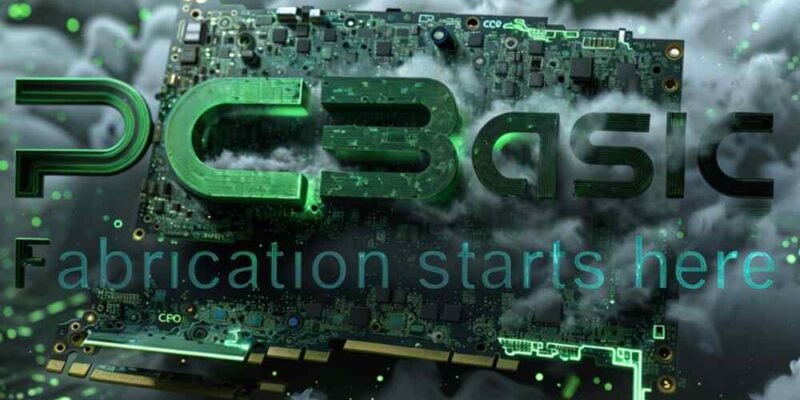Introduction
In the rapidly advancing world of healthcare, precision and reliability are paramount. At the heart of many innovative medical devices is Medical PCBA—Printed Circuit Board Assembly specifically designed for medical applications. Medical PCBA combines cutting-edge PCB manufacturing processes with strict compliance with regulatory standards, ensuring that devices perform flawlessly in critical environments.
Medical PCBA plays a vital role in developing life-saving equipment, from diagnostic machines to wearable health monitors. This blog will explore its importance, applications, manufacturing processes, and challenges, showcasing how it supports modern healthcare.
What is Medical PCBA?
Medical PCBA refers to assembling printed circuit boards (PCBs) tailored explicitly for medical devices. Electronic components are integrated into a PCB through surface mount technology (SMT) and through-hole assembly. These assembled boards ensure that medical devices operate accurately and reliably.
Applications of Medical PCBA
Medical PCBA is used in a wide range of healthcare technologies, including:
1. Diagnostic Equipment
- Examples: MRI machines, CT scanners, blood analyzers.
- Role of PCBA: Ensures precise signal processing and data acquisition for accurate diagnostics.
2. Patient Monitoring Systems
- Examples: ECG monitors, blood pressure monitors, and oxygen saturation sensors.
- Role of PCBA: Provides reliable data collection and real-time monitoring capabilities.
3. Therapeutic Devices
- Examples: Ventilators, infusion pumps, dialysis machines.
- Role of PCBA: Maintains consistent performance to deliver life-saving therapies.
4. Wearable Medical Devices
- Examples: Fitness trackers, glucose monitors, heart rate monitors.
- Role of PCBA: Enables compact, lightweight designs with advanced functionality.
5. Surgical Tools
- Examples: Robotic surgical systems, laser surgery equipment.
- Role of PCBA: Supports precise control and operational safety in high-stakes environments.
Critical Requirements for Medical PCBA
Unlike consumer electronics, medical devices must meet stringent requirements due to the critical nature of their applications. The following factors are essential in medical PCBA manufacturing:
1. Reliability
Medical devices operate in life-critical environments. Medical PCBA must ensure consistent and error-free functionality over long periods.
2. Miniaturization
The demand for smaller, portable medical devices requires compact and lightweight custom PCBs without compromising performance.
3. Biocompatibility
Materials used in medical PCBA must be non-toxic and safe for use in or near the human body.
4. Regulatory Compliance
Manufacturers must adhere to strict standards, such as ISO 13485, IPC Class III, and FDA guidelines for medical devices.
5. Precision and Accuracy
In medical applications, even minor errors can have severe consequences. Circuit board assembly processes must be highly accurate to ensure performance.
Medical PCBA Manufacturing Process
The production of medical PCBA involves several critical steps to ensure quality and compliance:
1. Design and Prototyping
- Engineers create detailed PCB prototypes tailored for specific medical applications.
- Advanced tools like CAD software design circuits that meet performance and size constraints.
2. PCB Fabrication
- PCB manufacturers fabricate the bare board using high-quality materials that meet medical-grade standards.
- Multi-layer designs are often employed to support complex circuitry.
3. Component Sourcing
- Medical-grade components are sourced from trusted suppliers to ensure reliability and compliance.
4. PCB Assembly
- Surface Mount Technology (SMT): Used for precisely placing small components.
- Through-Hole Technology (THT): Ensures mechanically solid connections for larger components.
- Mixed Assembly: Combines SMT and THT for optimal performance.
5. Inspection and Testing
- Rigorous testing methods, including automated optical inspection (AOI), X-ray inspection, and functional testing, are applied to verify performance and reliability.
- Stress testing ensures the PCBA can withstand various environmental conditions.
6. Certification
- The final product undergoes certification processes to meet regulatory standards before deployment.
Challenges in Medical PCBA Manufacturing
1. Stringent Quality Requirements
Medical PCBA must meet the highest quality standards, requiring precision at every manufacturing stage.
2. Component Sourcing
Finding biocompatible, medical-grade components can be challenging, especially with global supply chain disruptions.
3. Regulatory Compliance
Navigating complex regulations like FDA guidelines and ISO standards demands expertise and meticulous documentation.
4. Miniaturization
As medical devices become smaller, ensuring functionality within tight spaces becomes increasingly complex.
5. Cost Management
Balancing quality with cost efficiency is critical, as medical PCBA often involves high-quality materials and advanced processes.
Benefits of Medical PCBA in Healthcare
1. Enhanced Patient Care
Reliable and accurate medical devices improve patient outcomes and provide real-time data for better decision-making.
2. Increased Efficiency
Medical PCBA enables automated diagnostic and therapeutic tools, reducing human error and improving operational efficiency.
3. Compact Designs
Miniaturized PCBs make portable and wearable devices possible, enhancing convenience for patients and healthcare professionals.
4. Customization
Custom PCB designs allow manufacturers to create solutions tailored to specific medical needs, fostering innovation in the field.
The Future of Medical PCBA
As technology advances, medical PCBA will continue to play a pivotal role in transforming healthcare. Emerging trends include:
- Integration with IoT: Medical PCBs will enable connected devices for remote patient monitoring.
- AI and Machine Learning: Advanced PCBs will support AI algorithms for predictive diagnostics.
- Sustainable Materials: Environmentally friendly materials will become more prominent in medical device manufacturing.
Conclusion
Medical PCBA is the foundation of modern healthcare technology, powering many life-saving devices. From diagnostics to therapy, these high-precision circuit board assemblies ensure reliability, accuracy, and compliance with stringent medical standards.
Partnering with a trusted PCB assembly manufacturer specializing in medical applications is essential for manufacturers. With expertise in PCB manufacturing, custom PCB design, and prototype PCB assembly, PCBA suppliers like PCBasic are driving innovation in the medical field.
If you’re developing cutting-edge medical devices, investing in high-quality medical PCBA is critical to delivering exceptional patient care and advancing healthcare technology.
Also read interesting articles at Disboard.co.uk













